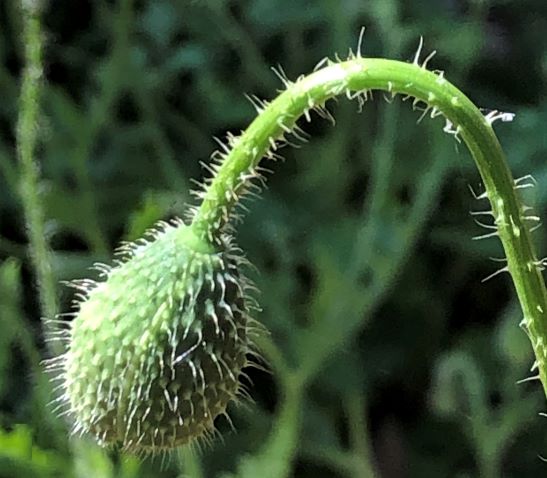The bright red Flanders Poppy, currently flowering in temperate Australian gardens, including ours in Emu Heights, NSW, has become synonymous with ‘remembrance’. It is a poignant symbol associated with commemoration, particularly of the First World War.
Many people have eaten poppy seeds at some point in their lives, but did you know that the leaves of these brightly coloured annuals are also edible? The young leaves can be eaten as a spinach substitute or used raw in salads or sandwiches. The red petals can be used to make a red syrup or food colouring. The seeds can be used, not only as a topping for bread rolls, but in the bread itself, or in cakes or biscuits. If you had a lot of seed, you could even press them for oil.
Flanders poppies do not contain opium so they are not illegal to grow or transport in NSW, which their more pastel coloured cousins (Papaver somniferum) are.
The brightness of the flowers is followed by attractive, but small, seed heads which can be used in floral arrangements. Flanders poppies are recognised as herbs and the flowers were often dried and used in medicines. The red petals were also used as a natural dye.
Because Flanders poppies (Papaver rhoeas) self seed easily, they could be mistaken for being perennial plants as they pop up, year after year, in the same place. They are, in fact, annual plants which have become weeds in some areas, particularly in Europe, leading to common names such as ‘corn poppy’, ‘field poppy’ or, simply, ‘red poppy’.
HOW TO GROW FLANDERS POPPY
The easiest way to get Flanders poppies growing in your patch, is to find someone who already has them and see if they will allow you to take a few small plants from their garden when they first start appearing in autumn. Once you have them flowering in your garden, they should self-seed and, basically, look after themselves!
In our experience, Flanders poppies can be tricky to germinate from seed and are very slow-growing at the beginning. They are sown in late summer or autumn. Simply sprinkle the tiny seeds onto the surface of the soil, in the area you want them to grow. You will need to water gently if there is no rain. You may need to protect the emerging plants from slugs and/or snails.
If you have a challenge with slugs, as we do, or if you prefer to have a little more control: sprinkle the seeds onto the surface of seed raising mix, cover lightly with more of the seed raising mix and keep moist. In theory, the seed will germinate in 14-21 days but you may need patience. When the seeds germinate, the seedlings will grow very slowly and the temptation to give up is strong, but I encourage you to persist! Prick them out from the seedling tray or punnet into their own pots when they are big enough for you to handle. Plant the seedlings, which may still be tiny, into your garden in late autumn, about 30cm apart.
As spring approaches and the weather begins to warm, your poppy plants will grow much more quickly. Within a few weeks they will expand in size, growing upwards as well as outwards, and the first buds should appear in mid-Spring. A strong wind at that time can blow all the petals off the flowers, which can be disappointing, but poppies are tough and soon there will be many more flowers, blooming over several weeks. If you cut off the old flowers (this is called ‘dead-heading’), the flowering period can be extended.
As the seed heads form and dry out, you can collect the seeds, save some for yourself and/or share some with friends but, truly, it’s easier just to let the seed drop and look after itself. If you decide you want the poppies growing in a different location, wait until the new plants have started growing and move them in mid to late autumn while the soil is still relatively warm.
Fun Final Fact
Flanders poppy seeds are tiny; in fact, there are about 7,000 Flanders poppy seeds in 1 gram.
I wonder who counted them to work that out!
Until next Friday
Happy growing!
Lynne 🍅
DISCLAIMER: The information presented in this blog post is written for general knowledge and/or entertainment purposes only. Please do further research if you are unfamiliar with this plant. While all care is taken to be accurate, Hillside Homegrown & Handmade accepts no responsibility for actions taken by the reader because of information shared in this article.







